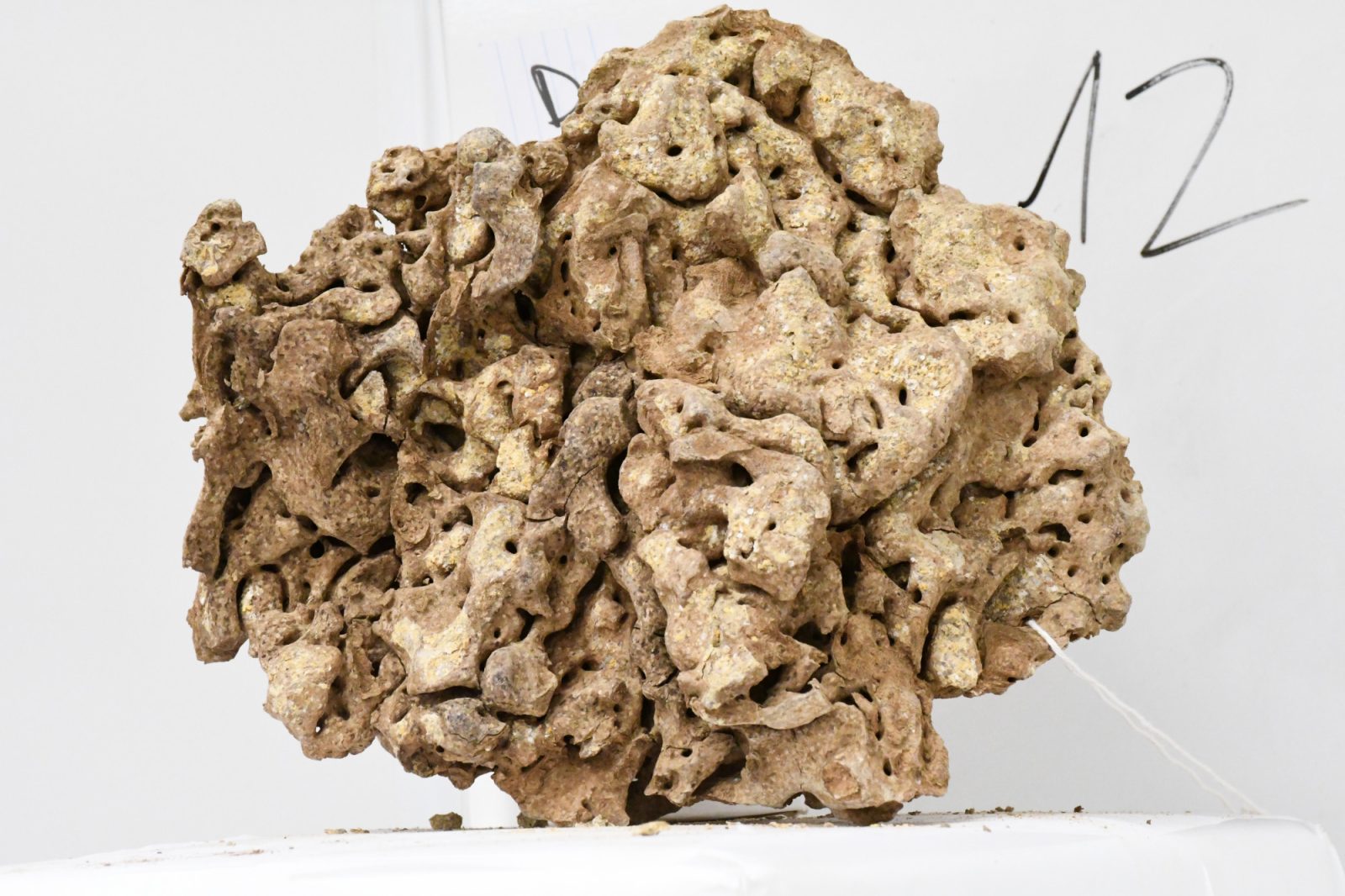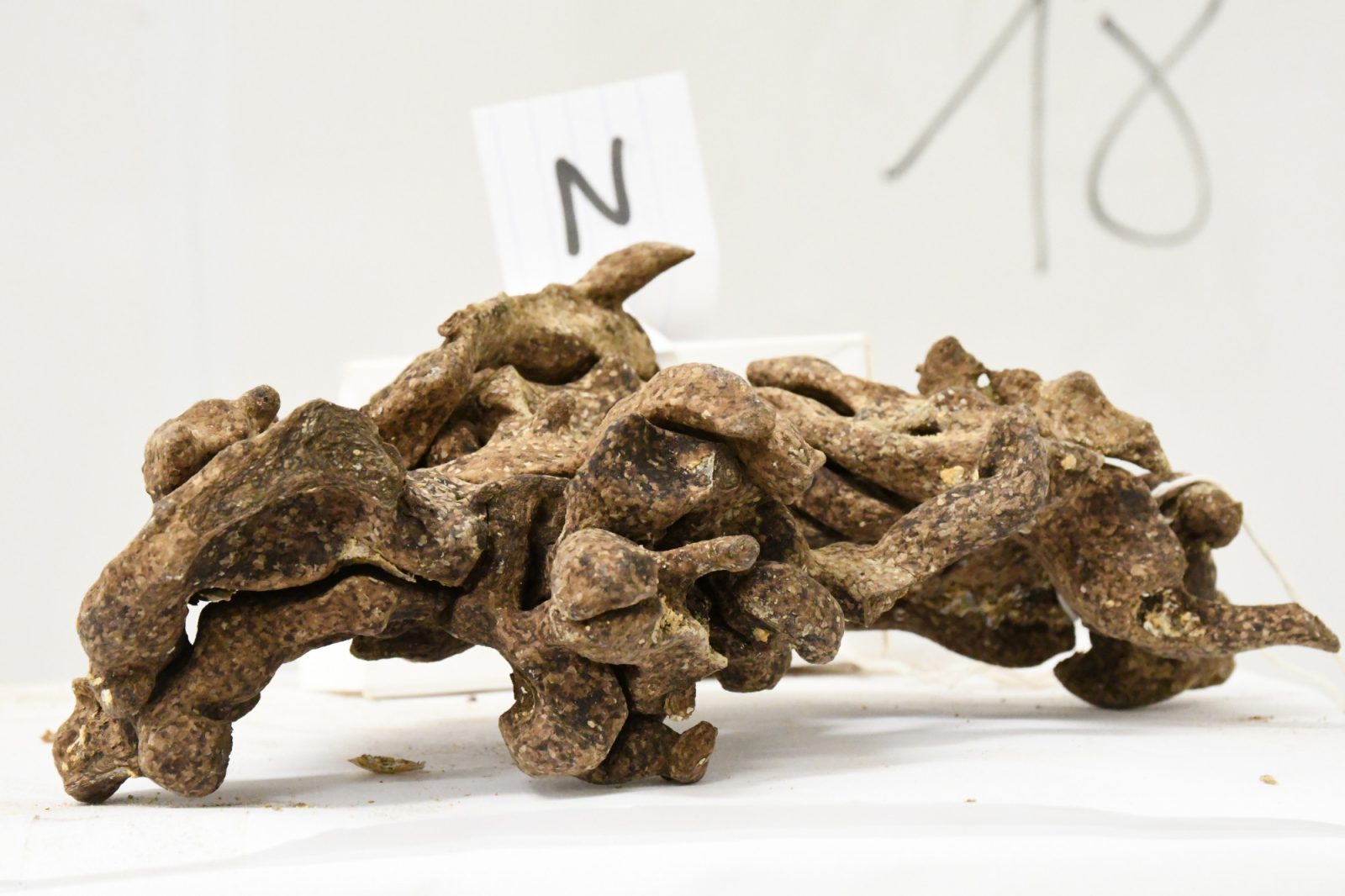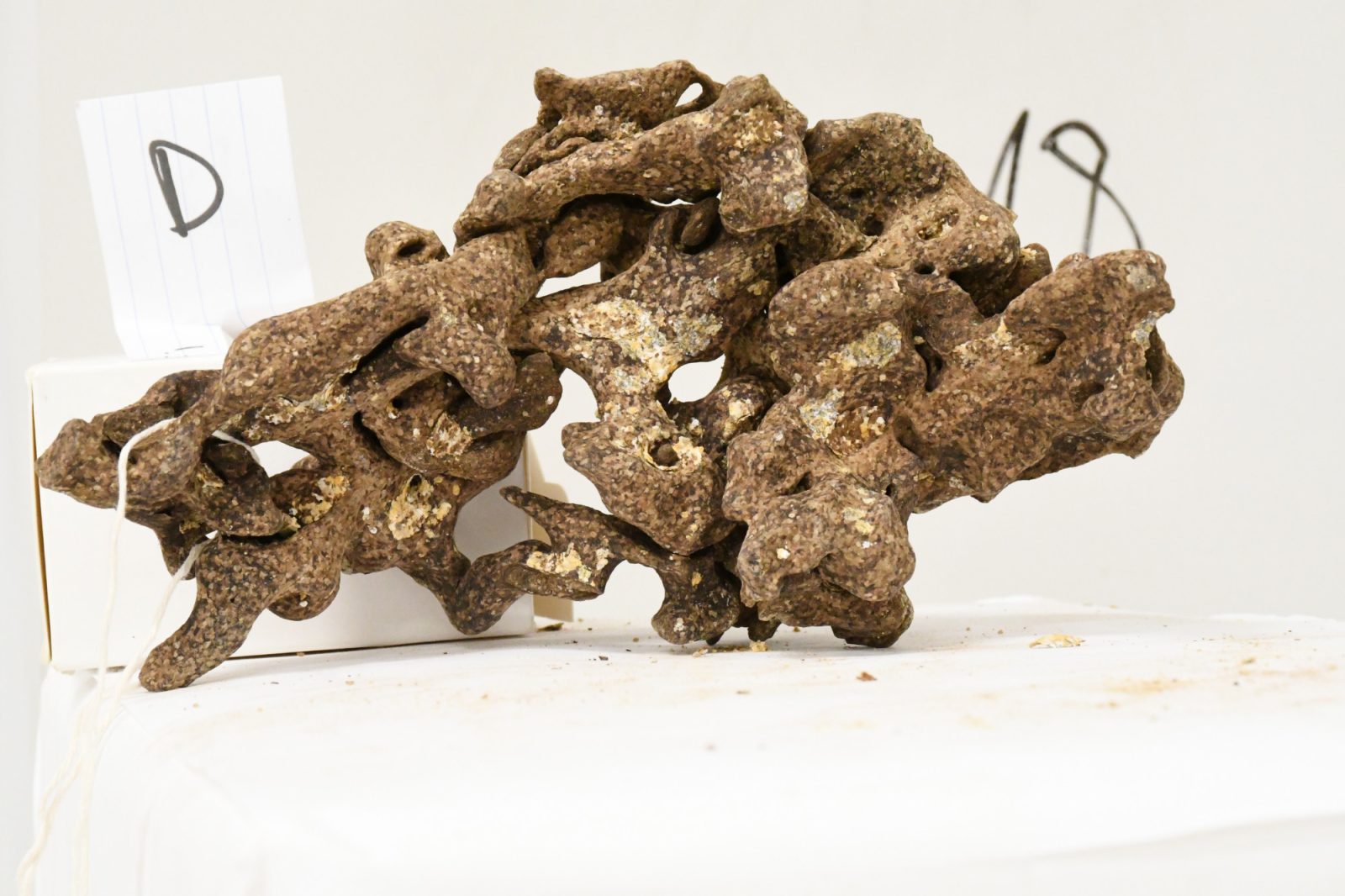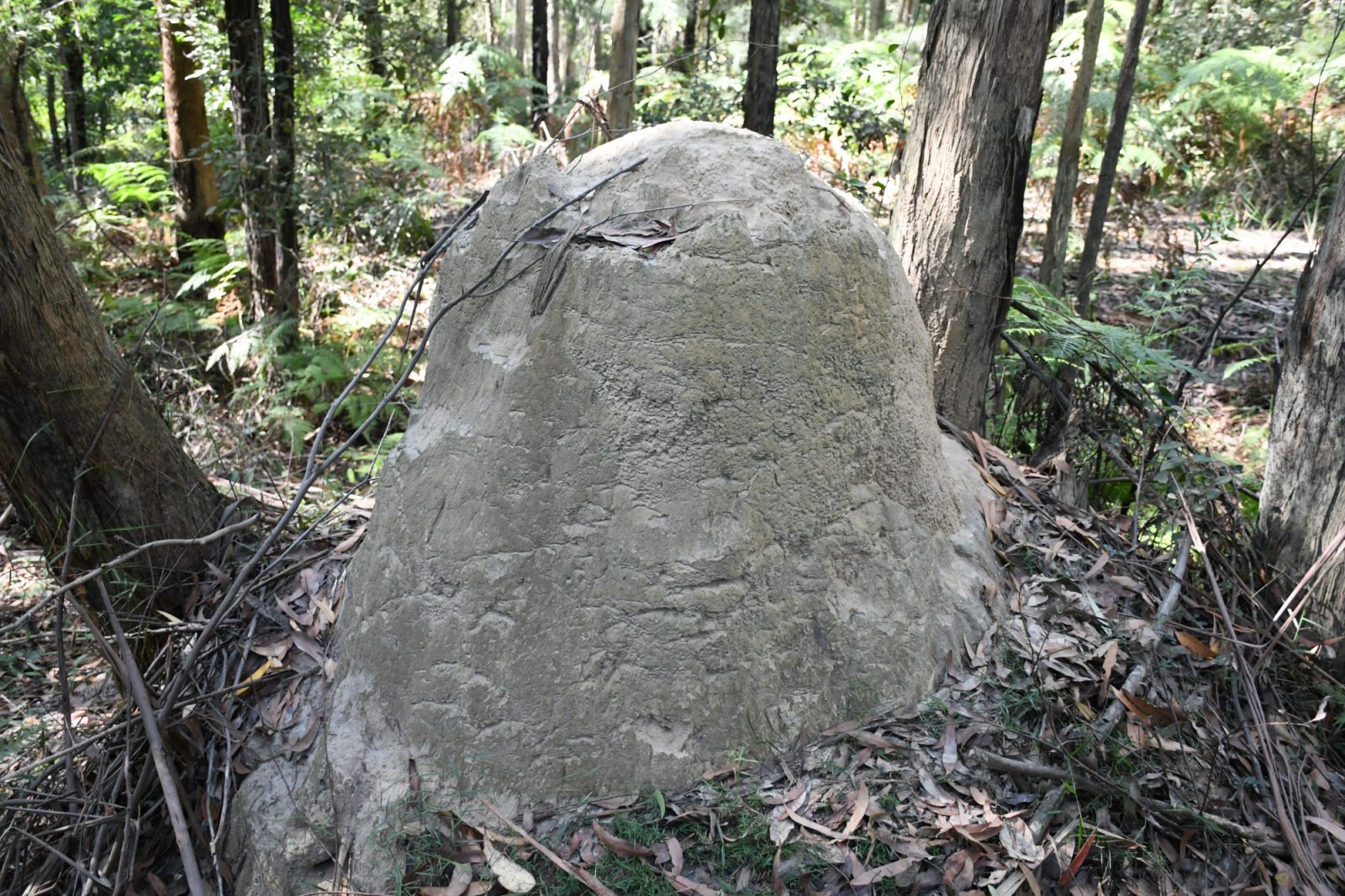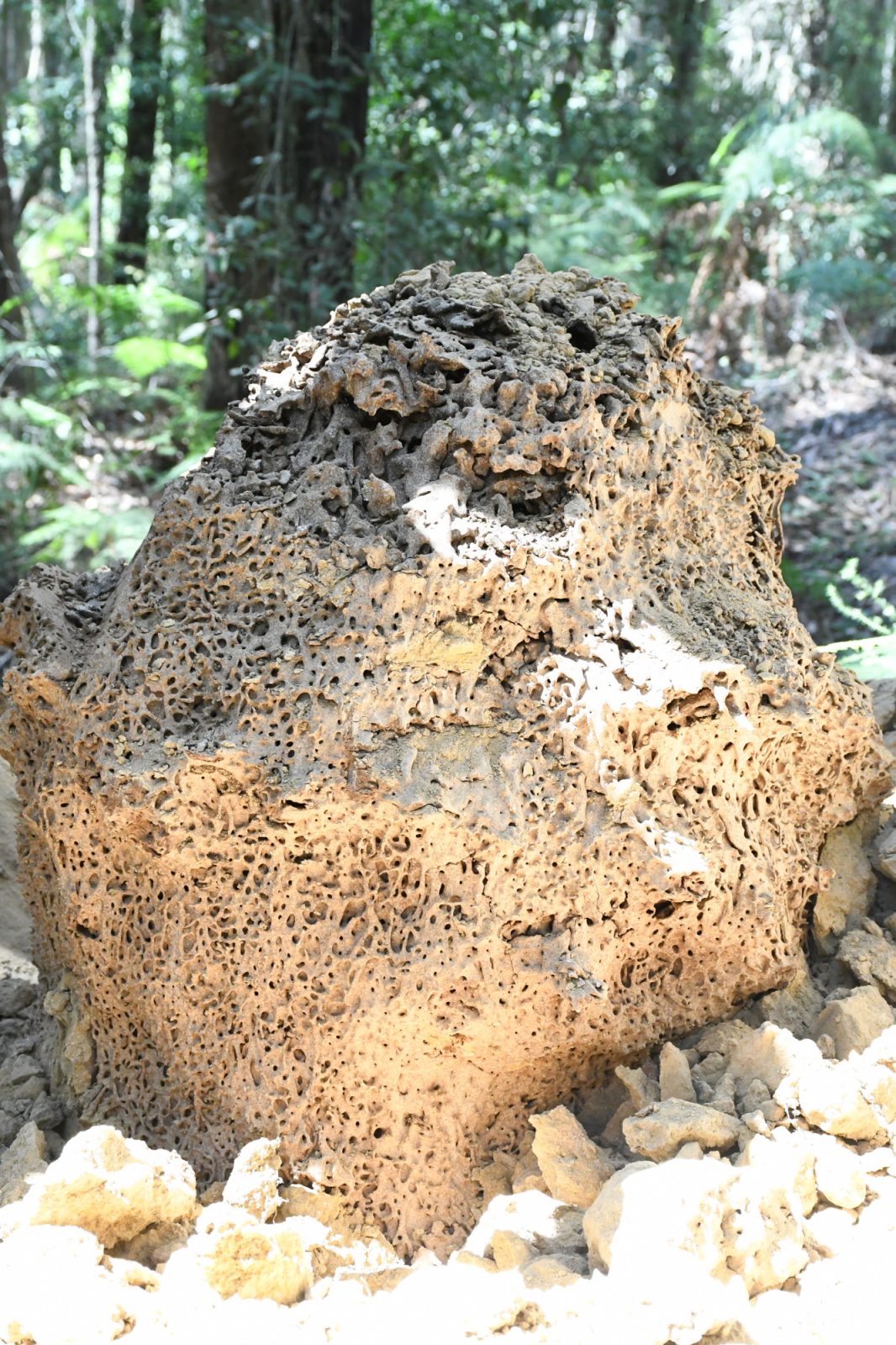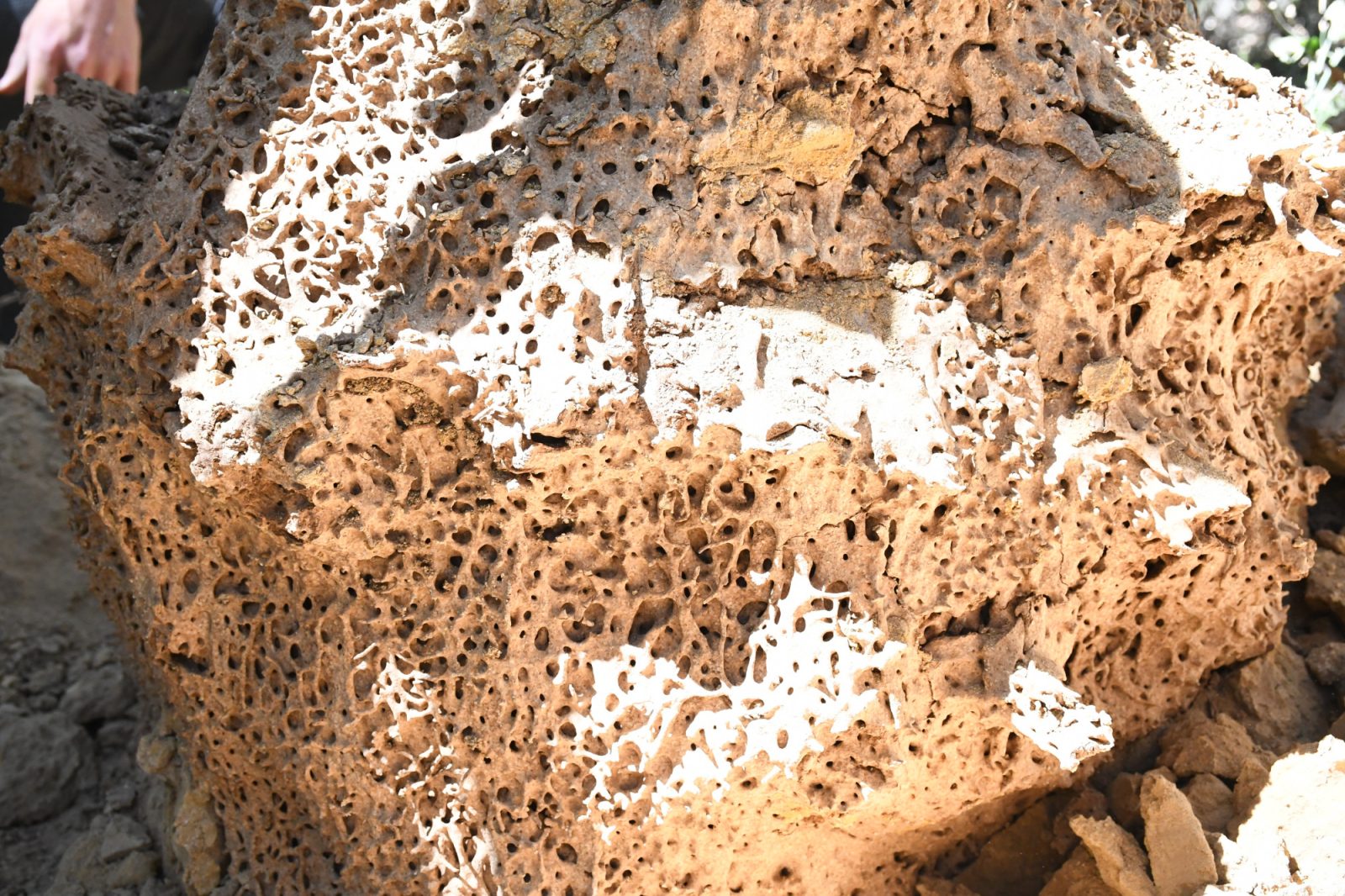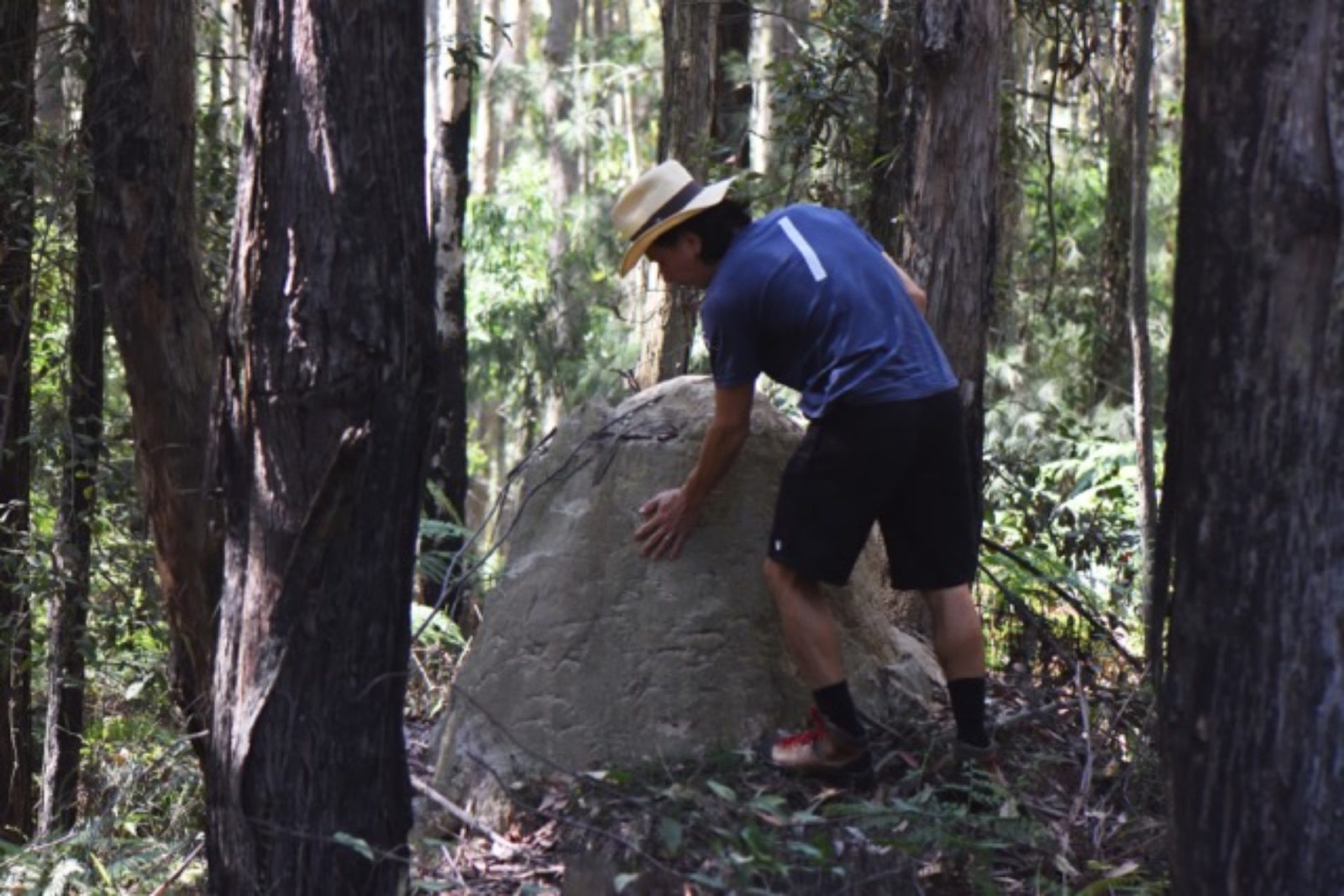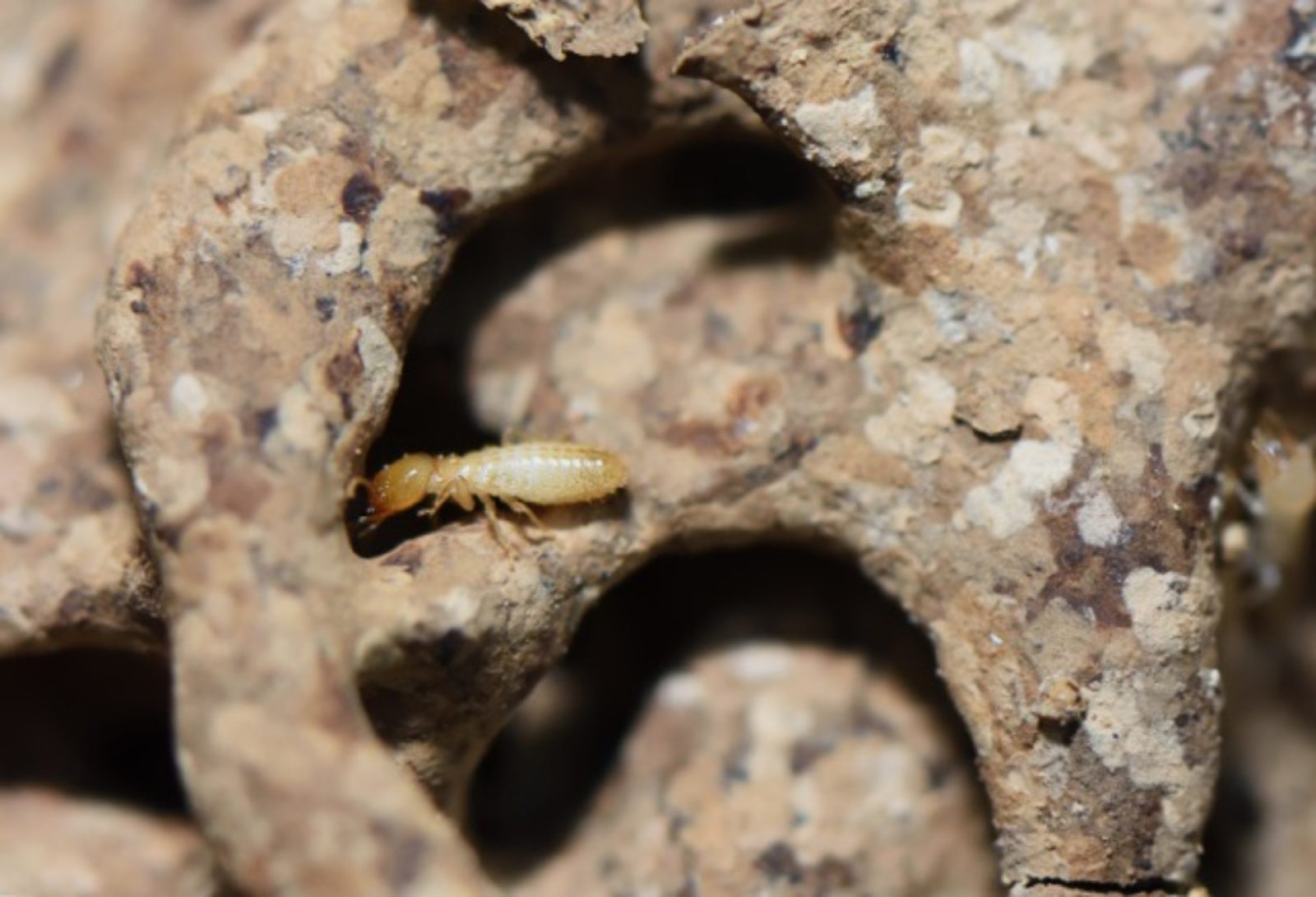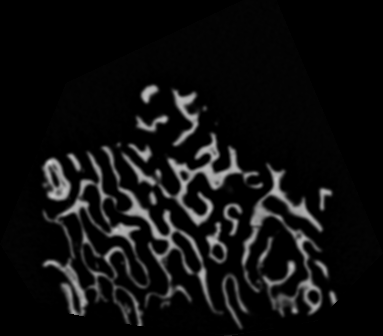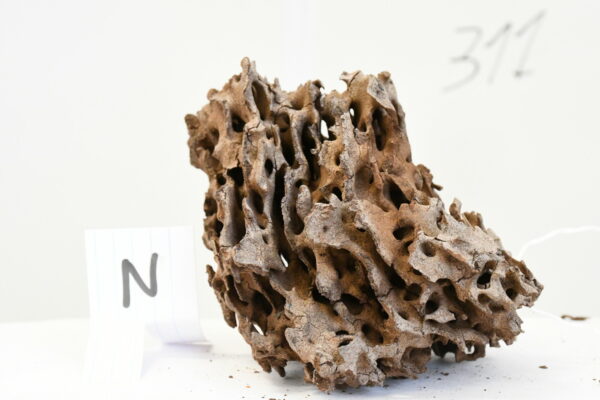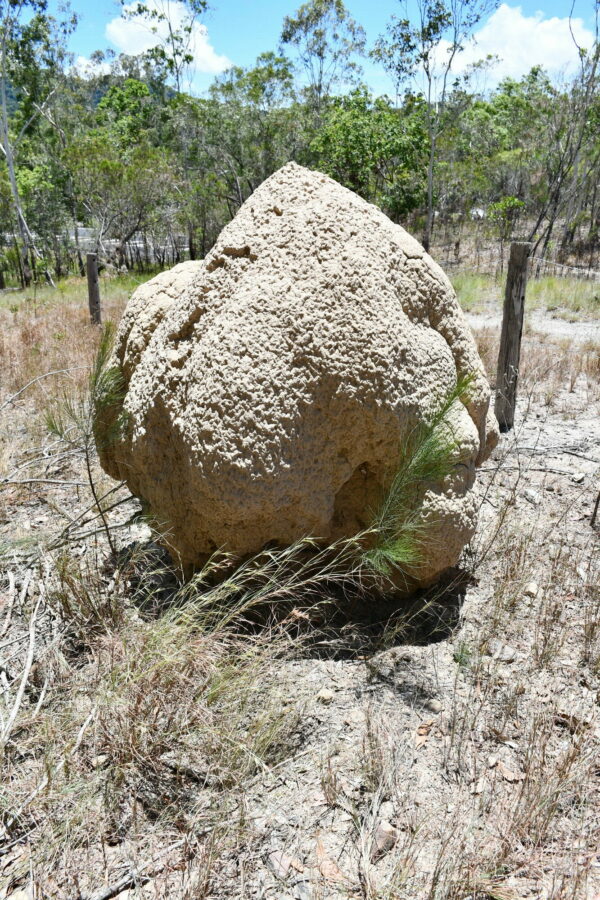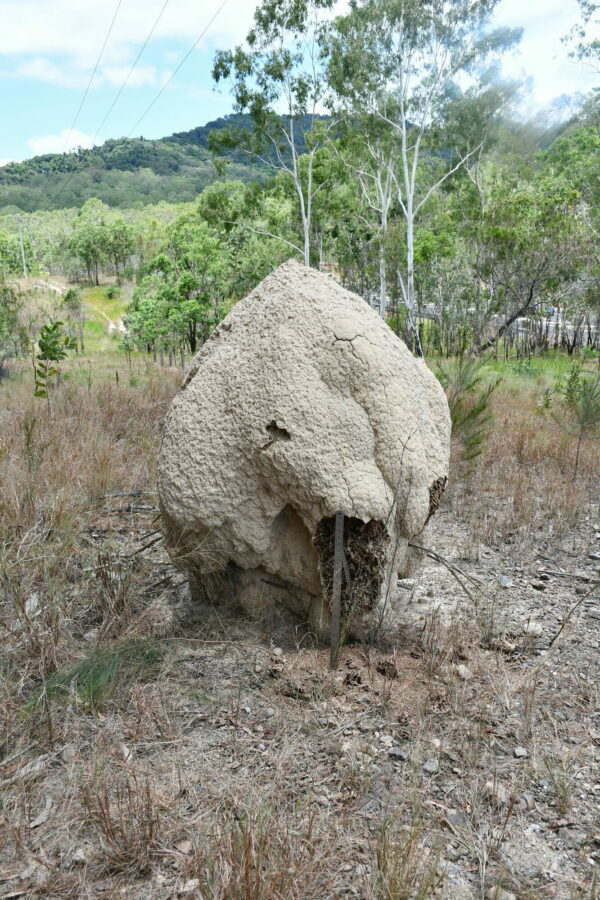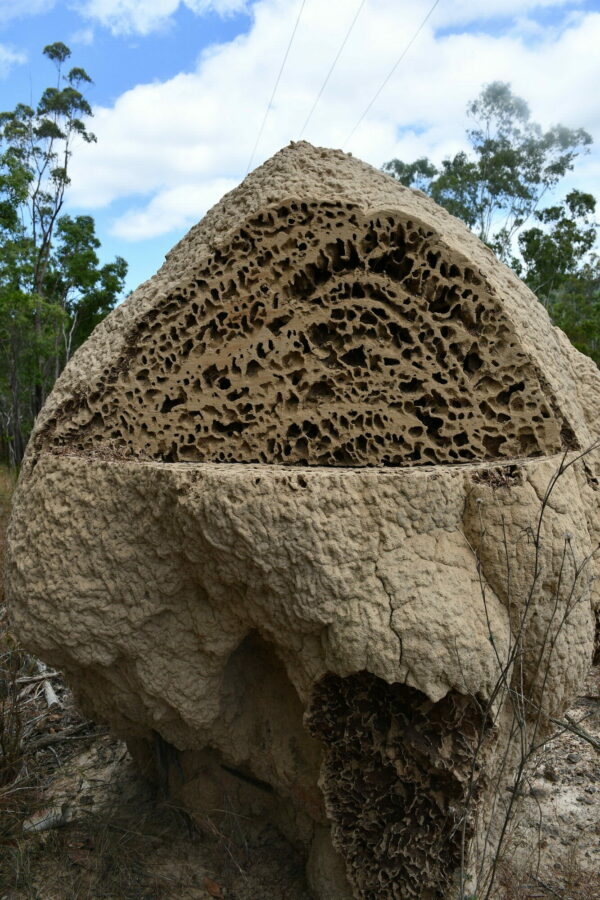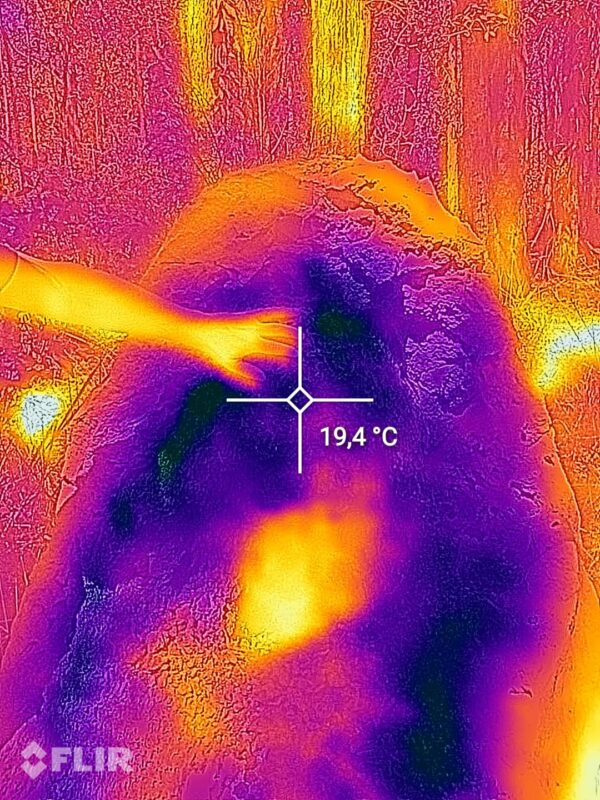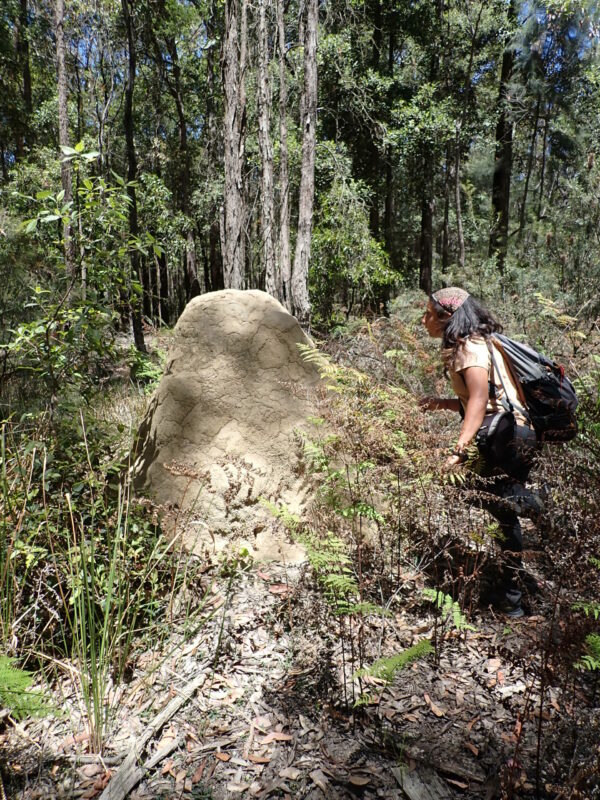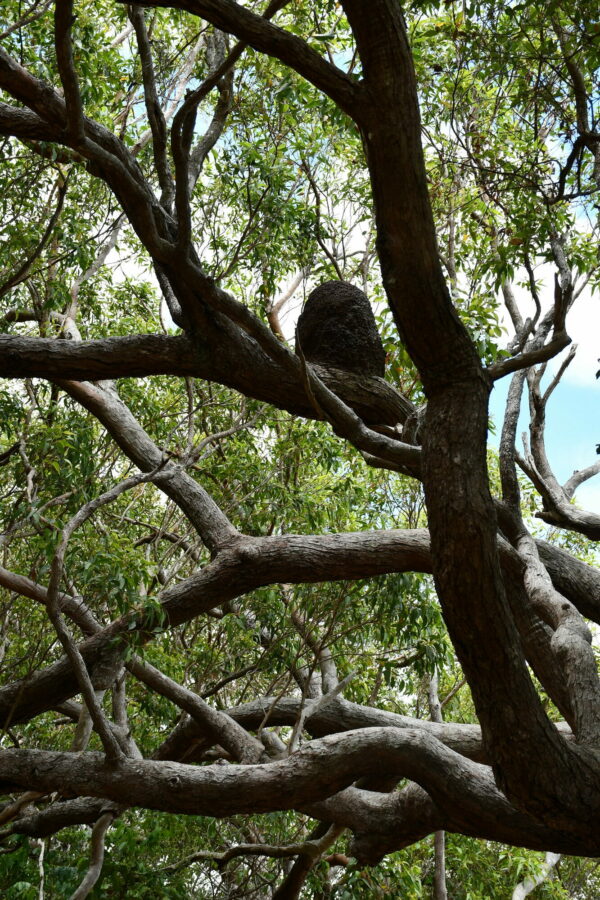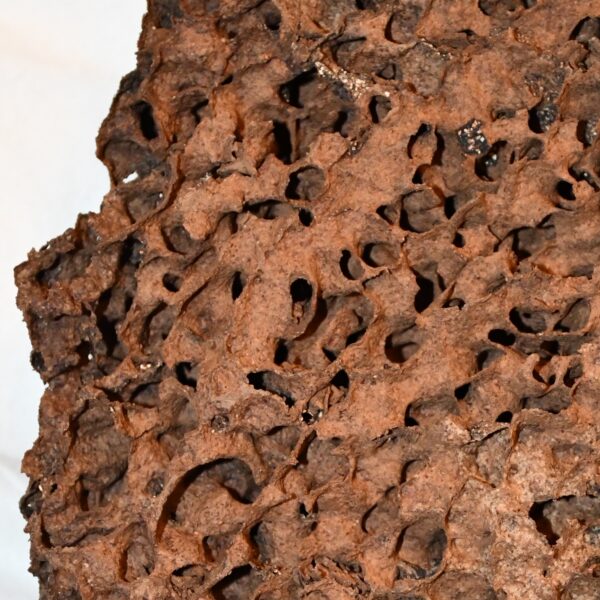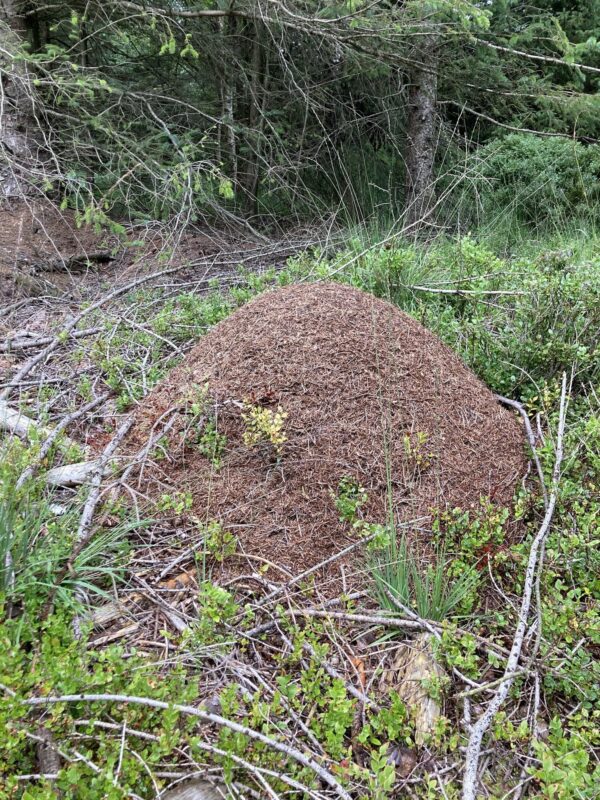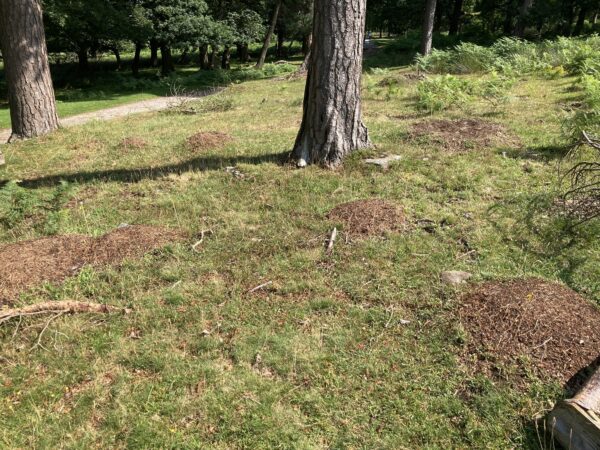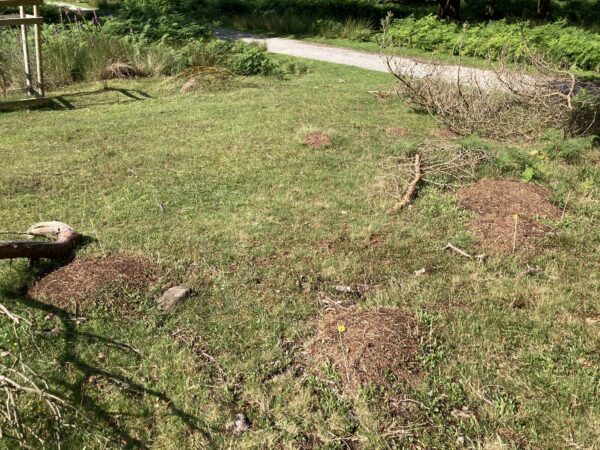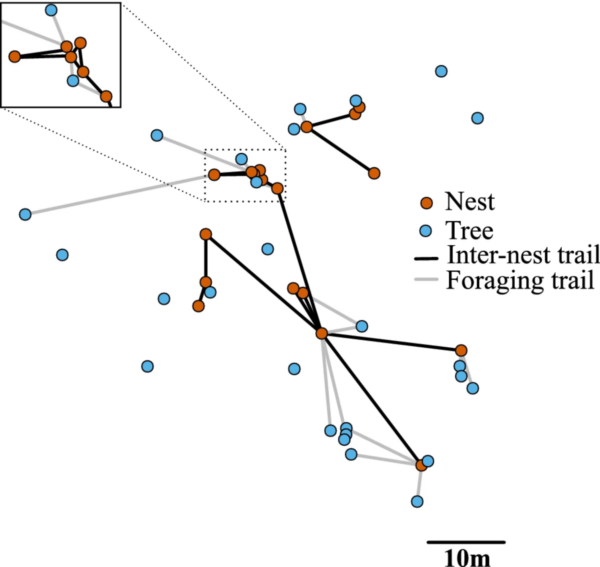Termites often impress us with their ability to build large and complex mounds. This ability, however, is typically restricted to the single family Termitidae, while the nests of all other termite families are often very simple. The termite Coptotermes lacteus representsa rare exception, as their colonies have independently evolved the ability to build very large and complex mounds.
Fragments of this mound were collected from Olney State Forest in New South Wales, Australia, in a mountainous region with somewhat fresher climate than the surrounding areas, atypical habitat of C. lacteus. The mound was massive and covered by a very thick (> 5 cm) and hard external crust that required a lot of effort from us to open. The nest was warm inside, indicating that it was inhabited, but we saw hardly any termites.
The internal structure is complex with a variety of structures changing from the centre of the nest towards the periphery. We find some of the typical characteristics of Coptotermes architecture, with some structures comprising a scaffold of tiny pillars and other structures that resemble layers of solidified semi-fluid material.

